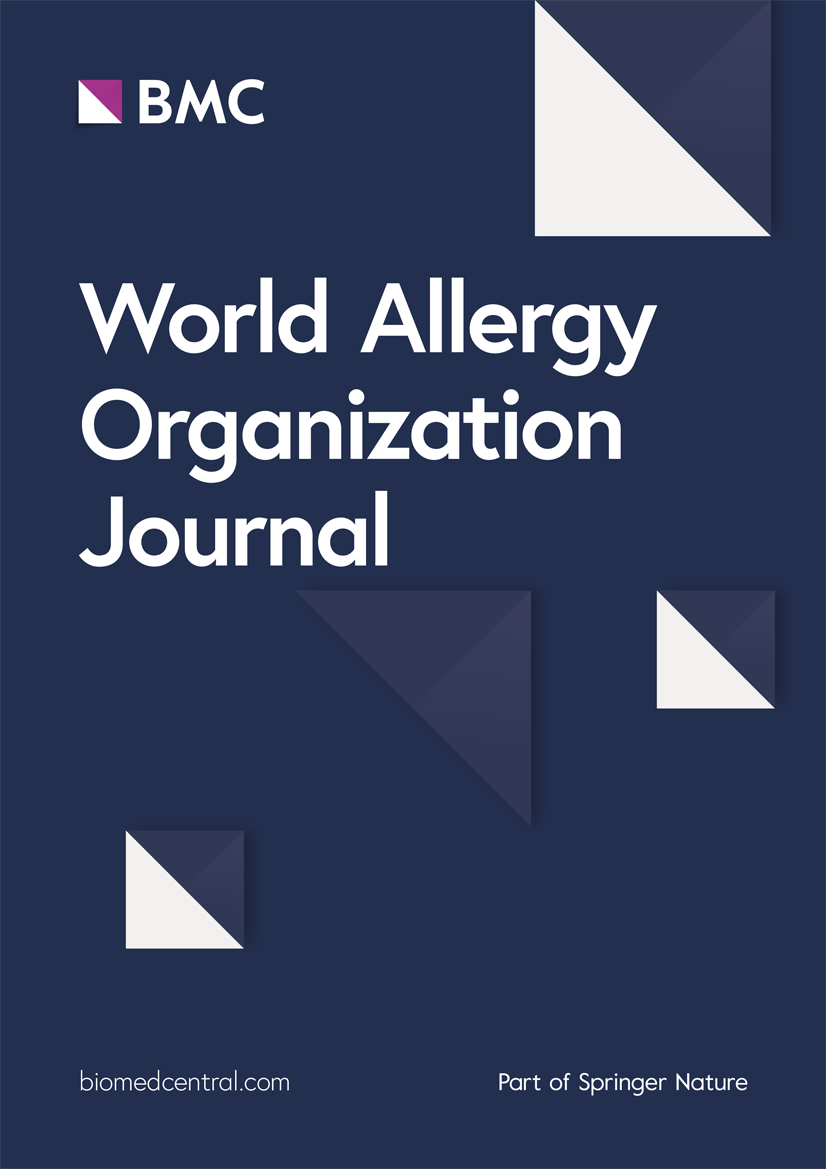Risk of IgE-mediated food allergy and its impact on child growth: A machine learning approach
IF 4.3
2区 医学
Q2 ALLERGY
引用次数: 0
Abstract
Objective
Food allergy (FA) directly affects children's nutritional status, with a significantly higher risk of growth retardation among affected children. Identifying risk factors for FA and strategies to promote growth catch-up can offer valuable guidance for the treatment and nutritional management of children with FA.
Design
We developed machine learning models to predict the occurrence of immunoglobulin E-mediated food allergy (IgE-FA) and the likelihood of post-treatment growth catch-up, using demographic and biological baseline data.
Patients
We recruited 130 children aged 0–3 years with IgE-FA as the FA group and 65 healthy children as the control group.
Results
Using machine-learning-based bioinformatics analysis, we developed predictive models and identified key factors influencing growth in IgE-FA children. The IgE-FA prediction model achieved an area under the curve (AUC) of 0.78 (95% CI: 0.708–0.848). Greater birthweight, a family history of allergies, and early-life antibiotic exposure were identified as risk factors for IgE-FA. Notably, early antibiotic exposure increased the risk of IgE-FA by 2.77 times and the risk of milk allergy by 2.56 times. Growth analysis, both overall and by subgroup, revealed that pre-treatment weight strongly correlates with post-treatment height, weight, and body mass index (BMI), offering new perspectives for predicting and monitoring outcomes in IgE-FA. Milk allergy mainly impacts weight catch-up, whereas egg allergy affects BMI. Controlled avoidance of allergenic foods supports growth recovery in affected children.
Conclusion
Growth in children with IgE-FA is often restricted, and achieving expected growth levels remains challenging even after treatment. Weight is a sensitive and accessible indicator for predicting IgE-FA and plays a key role in post-treatment growth catch-up. Early and personalized nutritional guidance, along with regular weight monitoring, is recommended for all children with food allergy.
ige介导的食物过敏风险及其对儿童生长的影响:一种机器学习方法
目的食物过敏(food allergy, FA)直接影响儿童的营养状况,影响儿童发育迟缓的风险显著增高。确定FA的危险因素和促进生长追赶的策略可以为FA儿童的治疗和营养管理提供有价值的指导。我们开发了机器学习模型,利用人口统计学和生物学基线数据来预测免疫球蛋白e介导的食物过敏(IgE-FA)的发生和治疗后生长追赶的可能性。患者:我们招募130名0-3岁的IgE-FA儿童作为FA组,65名健康儿童作为对照组。结果利用基于机器学习的生物信息学分析,我们建立了预测模型,并确定了影响IgE-FA儿童生长的关键因素。IgE-FA预测模型的曲线下面积(AUC)为0.78 (95% CI: 0.708 ~ 0.848)。较大的出生体重、过敏家族史和早期抗生素暴露被确定为IgE-FA的危险因素。值得注意的是,早期抗生素暴露使IgE-FA的风险增加2.77倍,牛奶过敏的风险增加2.56倍。总体和亚组的生长分析显示,治疗前体重与治疗后身高、体重和体重指数(BMI)密切相关,为预测和监测IgE-FA的结局提供了新的视角。牛奶过敏主要影响体重,而鸡蛋过敏则影响体重指数。有控制地避免过敏食物有助于受影响儿童的生长恢复。结论:IgE-FA患儿的生长通常受到限制,即使在治疗后仍难以达到预期的生长水平。体重是预测IgE-FA的敏感指标,在处理后的生长追赶中起关键作用。建议对所有食物过敏的儿童进行早期和个性化的营养指导,并定期监测体重。
本文章由计算机程序翻译,如有差异,请以英文原文为准。
求助全文
约1分钟内获得全文
求助全文
来源期刊

World Allergy Organization Journal
Immunology and Microbiology-Immunology
CiteScore
9.10
自引率
5.90%
发文量
91
审稿时长
9 weeks
期刊介绍:
The official pubication of the World Allergy Organization, the World Allergy Organization Journal (WAOjournal) publishes original mechanistic, translational, and clinical research on the topics of allergy, asthma, anaphylaxis, and clincial immunology, as well as reviews, guidelines, and position papers that contribute to the improvement of patient care. WAOjournal publishes research on the growth of allergy prevalence within the scope of single countries, country comparisons, and practical global issues and regulations, or threats to the allergy specialty. The Journal invites the submissions of all authors interested in publishing on current global problems in allergy, asthma, anaphylaxis, and immunology. Of particular interest are the immunological consequences of climate change and the subsequent systematic transformations in food habits and their consequences for the allergy/immunology discipline.
 求助内容:
求助内容: 应助结果提醒方式:
应助结果提醒方式:


